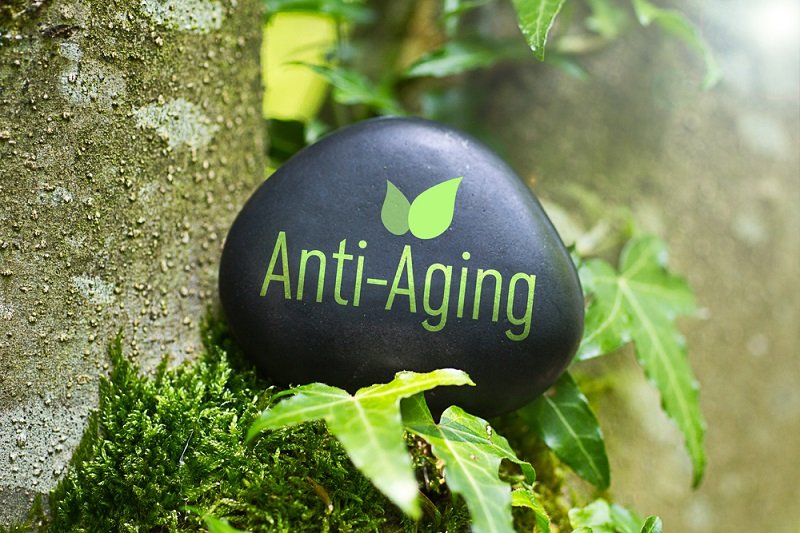Most anti-aging treatments and advice in the past have focused on preventative measures and age-concealing techniques. Lifestyle changes, expensive and intricate cosmetic rituals, and painful, invasive injection and surgical procedures are the only recourse to minimize, obscure, and postpone the visible effects of aging. However, a new age of anti-aging medical research and technology development is making promising inroads into “curing” or “healing” aging, with efforts targeted around reversing both the signs and effects of aging at their source.
It seems like new advice comes out every day about decisions you can make, habits you should change, and products you can buy to slow aging and minimize its effects. Common and practical lifestyle recommendations include staying hydrated, avoiding direct sunlight and wearing sunscreen, getting enough sleep, exercising, and eating healthy. Avoid unnecessary salt and sugar, and incorporate protein, healthy fats such as avocado, olive oil, and salmon, and antioxidant-rich and fermented foods such as kimchee, sauerkraut, and kombucha for their anti-inflammatory effects. Avoiding smoking and drinking, and any other recreational substance use as much as possible, is also recommended.
It should be noted that exercising, eating well, getting enough sleep, and cutting back on damaging substances are good lifestyle practices for combatting more than just the visible signs of aging. They’re effective against debilitating age-related diseases, including mobility issues, heart disease, memory loss or impairment, respiratory disease, diabetes, and even cancer. Maintaining a healthy weight and optimal blood flow while reducing bloating and puffiness are worthwhile goals at any stage of life.
Beyond these practical basics, other behavioral recommendations to reduce signs of aging include sleeping on your back to avoid musculoskeletal alignment problems, sagging, and stretching the delicate skin of your face; skipping straws (the use of which can exacerbate fine lines around the mouth); and adjusting your texting practices to avoid creasing the skin of your neck and chin by looking down continuously. The general idea is that any repetitive motion, posture, or pressure can create lines and wrinkles, and avoiding actions that crease, bend, stretch or fold your skin can reduce damage. Of course, smiling, frowning, and any other facial expression that you can think of fall into the same category. Better practice your poker face if you want to avoid wrinkles.
When it comes to products and procedures, the most focus is given to skincare. It’s important to exfoliate without overdoing it and damaging your skin. A good moisturizer can help you achieve quick improvements, and adding a cleansing and night serum routine before bed is one of the most effective changes that you can make. Retinoids and vitamin C in skincare offer some of the most dramatic benefits that you can achieve without moving into the realm of professional intervention. Another, perhaps unexpected, recommendation is to switch to silk linens, particularly for your pillowcase, since it’s less drying and the lower friction may keep your skin from stretching and developing wrinkles as compared to cotton.
Effective professional treatments tend to require a frequent, reoccurring maintenance schedule. Anti-aging acupuncture to stimulate blood flow and cell turnover is a popular choice, as are injection-related treatments such as Botox. Facial peels, face (and body) lifts, and all types of plastic surgery can have some effect when it comes to mitigating the appearance of aging. Vitamin drips are another, somewhat controversial, treatment that is available in many cities.
However, it may be the research and treatments under development right now that prove to be the most effective. Multiple teams of medical researchers are working on breakthrough technologies around the world. Dr. Mikhail Blagosklonny is a specialist in cancer and aging research with a focus on protecting healthy cells from damage, and is working on a possible life-extending treatment based on a well-known cancer drug. A team at the University of New South Wales have identified a process that cells use to repair DNA at the cellular level, and are working on putting this discovery into action, with successful trials in mice already completed and human trials starting this year. A pill that literally reverses aging at a cellular level could be on the horizon.
Within the coming years, lifestyle recommendations, anti-aging cosmetics, and invasive injection and surgical procedures may fall out of favor as medicine moves beyond treating the signs of aging, to healing the damage of aging at its source. In the meantime, healthy lifestyle choices, conscientious cosmetic regimes, and injection or surgical anti-aging procedures are your best options. Exercise, hydration, rest, and good nutrition are the building blocks; sunscreen, moisturizer, and retinols are a good follow-up approach; and Botox and acupuncture are solid go-to choices to reduce signs of aging until scientists launch those magical age-reversing drugs under development.

